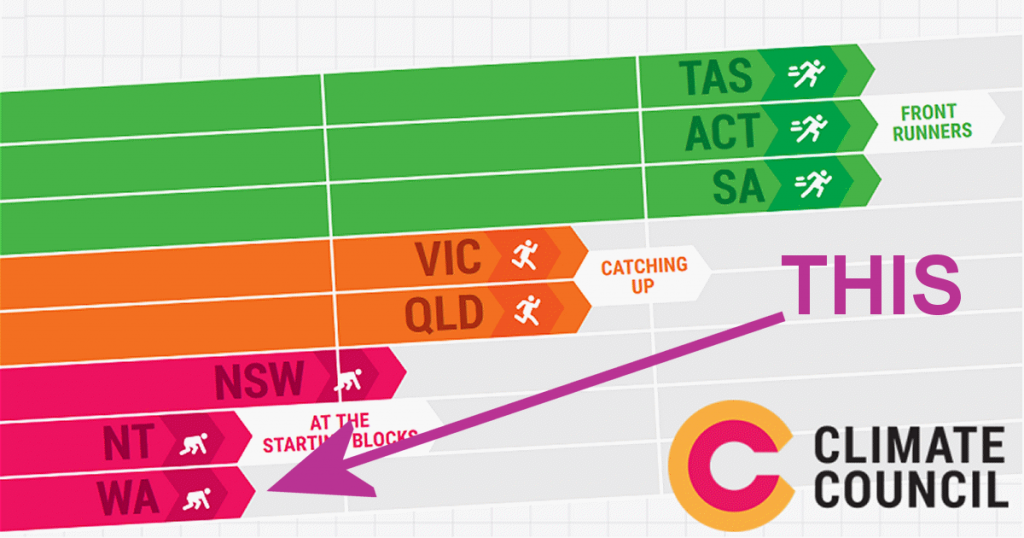21 councils in Western Australia are putting pressure on the McGowan Government to implement a state level emissions reduction and/or renewable energy target.
The councils involved are all members of the Cities Power Partnership (CPP), a Climate Council initiative bringing together local governments across the country to tackle climate change.
The renewed call for state targets emerged as the result of discussions held during a recent forum in Perth, hosted by the CPP.
“It’s time for the state to step up and commit to a target that will support Western Australia’s shift to renewables,” says Climate Councillor Andrew Stock. “A renewable energy target would signal our state’s climate ambitions, and support the local governments, communities and industry leaders to make the clean energy transition.”
Western Australia was graded a “C” and found itself at the bottom of state/territory ranking table in the Climate Council’s 2018 Renewable Energy Scorecard, partly due to the fact WA has no state-level targets. However, the accompanying report also noted Western Australia had the third highest proportion of households with rooftop solar power systems. While the state’s government may be yet to get really serious about renewable energy and emissions reduction, Western Australia’s residents certainly have been1.
The same can be said of a number of WA councils that have embraced renewables including solar energy to reduce emissions and electricity costs. One such council we recently mentioned was the City of Vincent (which doesn’t appear to be a CCP member, but attended the Perth forum).
All Australian states and territories have committed to renewable energy and/or net zero emissions targets – except Western Australia.
Last year, the Western Australian Local Government Association (WALGA), which advocates on behalf of 138 WA councils, published an updated Policy Statement on Climate Change calling for state-level targets.
How Many Bureaucrats Does It Take To Change A Lightbulb?
The collective of WA councils also wants to see reform to remove regulatory barriers and accelerate a transition to a low carbon, energy efficient economy.
“As it stands, local governments in WA can’t even change a lightbulb without running into state red tape,” said another Climate Councillor, Greg Bourne.
It seems he wasn’t really exaggerating. Among other regulatory issues cited as barriers to local-level action, Mr. Bourne says councils across Western Australia face hurdles in switching their streetlights to energy efficient LEDs due to “clunky” state regulation.
What should be such a simple thing to do can save councils (and ratepayers) big bucks, while reducing street lighting related emissions. According to 100% Renewables there are around 2.3 million street lights in Australia and a small regional council might spend $300,000 per year on street lighting for local roads; while their big city counterparts can fork out $2.5 million or more. The company states energy savings of between 50% and 60% are typical when switching to LED-based street lighting.
Footnotes
- Plus there’s some big projects lined up for the state such as the Asian Renewable Energy Hub ↩


 RSS - Posts
RSS - Posts



Even without an RE target, WA electricity market is changing very fast :
https://reneweconomy.com.au/aemo-says-w-a-grid-at-risk-if-regulations-fail-to-keep-up-with-renewable-transition-67502/